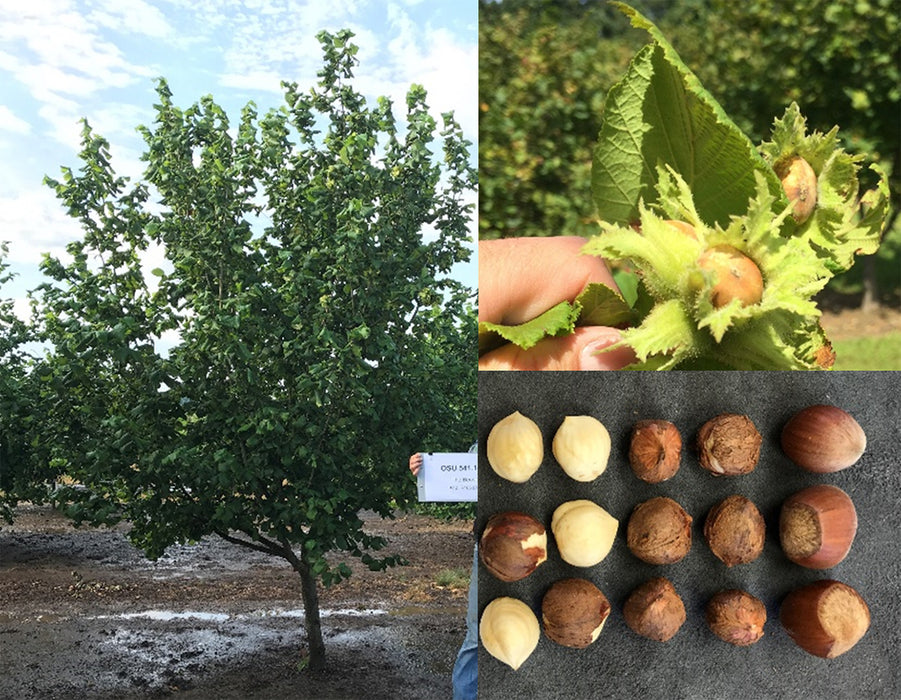
The Beast Filbert
Corylus avellana x Americana OSU
Due to import restrictions we are unable to ship Filbert to CA, OR.
The Beast is 75% European hazelnut and 25% American hazelnut and highly resistant to eastern filbert blight. The Beast is vigorous and productive. A cross of NY 616 (C. americana Rush x C. avellana Barcelona) x C. avellana OSU 226.118, it is a high yielding hybrid hazelnut tree with small nuts and adequate blanching after roasting, making it suited for the kernel market. A vigorous, upright tree with a slightly spreading growth habit. It is compatible as a pollinizer with other Rutgers cultivars like Somerset, Hunterdon, Grand Traverse, and Raritan.
| Plant Characteristics | |
|---|---|
| Pest Resistance | Excellent |
| Disease Resistance | Excellent |
| Drought Tolerance | Good |
| Heat Tolerance | Excellent |
| Humidity Tolerance | Excellent |
| Sun Tolerance | Excellent |
| Wet Soil Tolerance | Poor |
| Shade Tolerance | Fair |
| No Spray | Excellent |
| Salt Tolerance | Fair |
| Fresh for Kids | Very Good |
| Thorns | No |
| Plant Type | Shrub |
| Soil Type | Adaptable |
| Edible Type | Nut |
| Self Fertile | No |
| This information is accurate to the best of our knowledge, comments/opinions are always welcome | |